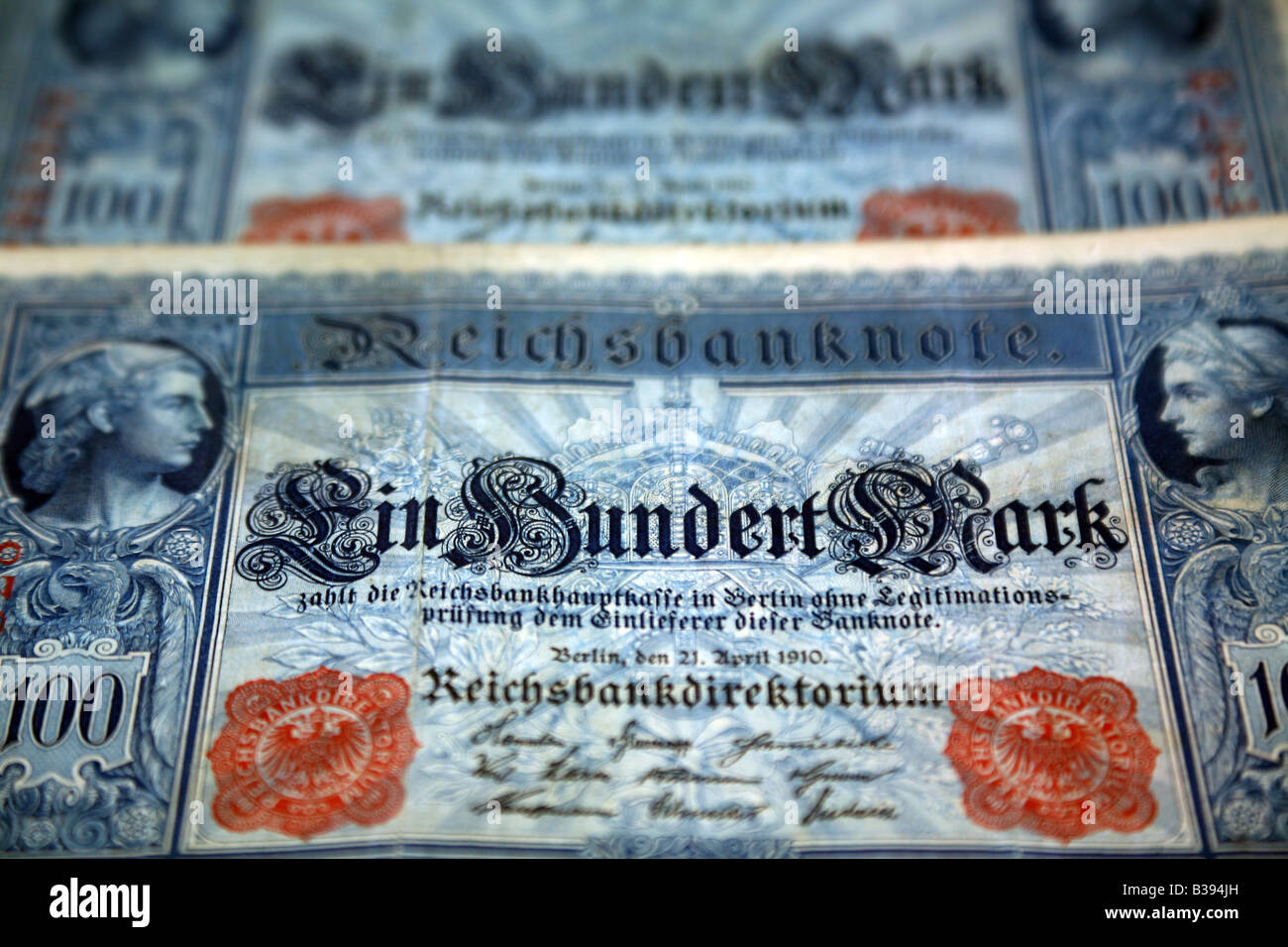Close up of a traditional German banknote with alexandra illustration

Image details
Contributor:
MOB IMAGES / Alamy Stock PhotoImage ID:
B394JHFile size:
52.4 MB (1.9 MB Compressed download)Releases:
Model - no | Property - noDo I need a release?Dimensions:
5242 x 3494 px | 44.4 x 29.6 cm | 17.5 x 11.6 inches | 300dpiDate taken:
21 August 2008More information:
German berlin alexandra bank currency old collect antique, currency, foreign exchange, germany, invalid, legitimation, money, old realm bank board authentication-entitled, banknote, berlin, buss, canceled, directors, realm note, realm notes, serial number, studio, thousand, images, royalty free photo, stock photos, stock photograph, stock photographs, picture, pictures, graphic, graphics, The Reichsbank, German for "Reich Bank", was the central bank of Germany from 1876 until 1945. It was founded on 1 January 1876 (shortly after the establishment of the German Empire in 1871). The Reichsbank was created through the assumption of the central bank of Prussia by the Reich government. Its first president was Hermann von Dechend. Before unification in 1871, Germany had 31 central banks – the Notenbanken (note banks). Each of the independent states issued their own money. In 1870, a law was passed that forbade the formation of further central banks. In 1874, a draft banking law was introduced in the Reichstag (the German parliament). After several changes and compromises, the law was passed in 1875. Despite the creation of the Reichsbank, however, four of the Notenbanken – Baden, Bavaria, Saxony and Württemberg – continued to exist until 1914. The history of the Reichsbank was volatile. Until World War I it produced a very stable currency called the Goldmark. The expenses of the war caused inflationary pressure and the mark started to decrease in value. The defeat of imperial Germany in 1918, the economic burden caused by the payment of reparations to the Allies, and the social unrest in the early years culminated in the German hyperinflation of 1922–23. The mark, formerly backed by gold, evolved into the Papiermark (paper mark), backed by nothing. Economic reforms, such as the issue of a new provisional currency – the Rentenmark – and the 1924 Dawes Plan, stabilised German monetary development and thus the economic outlook of the Weimar Republic. On